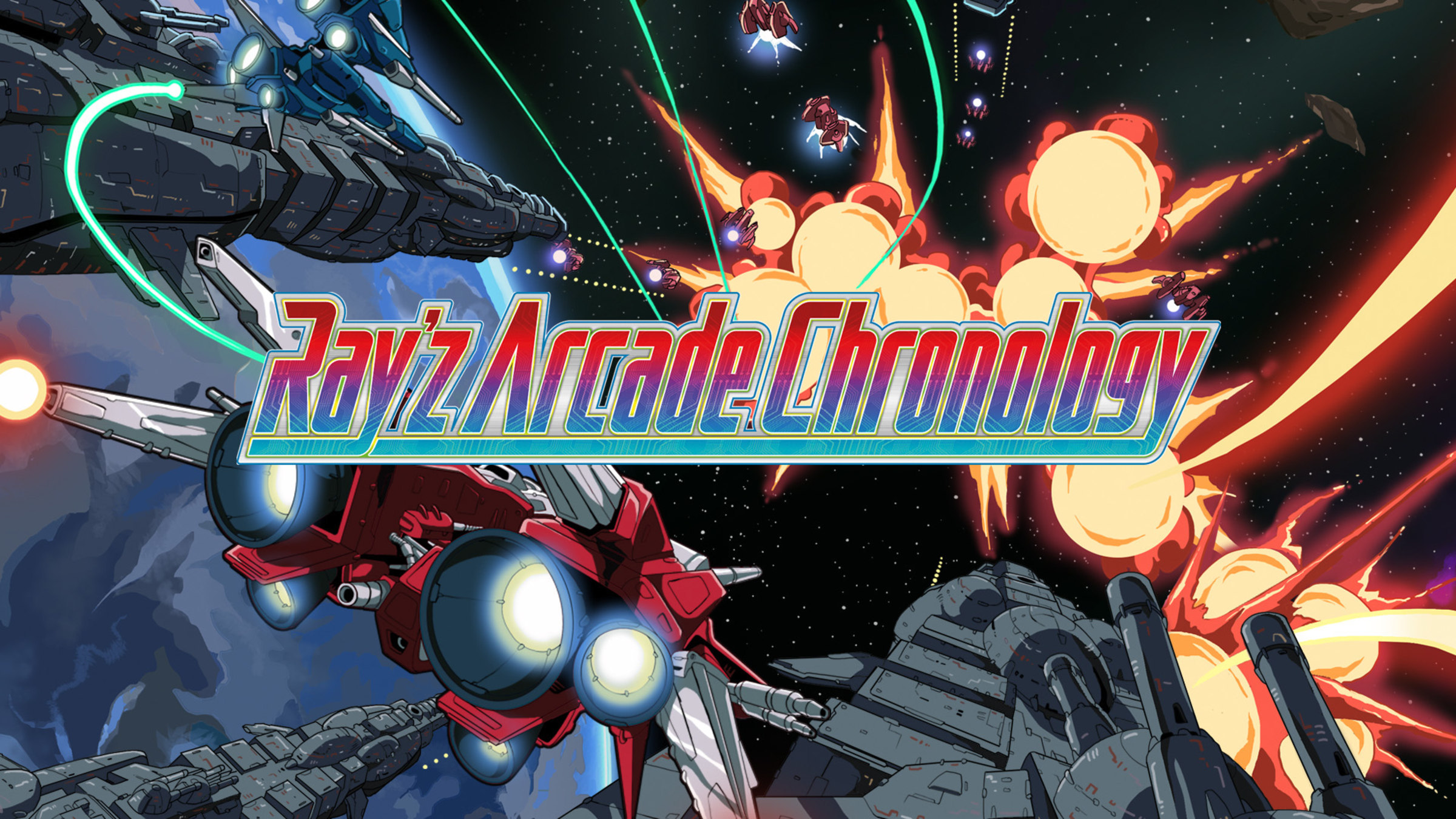Ray'z Arcade Chronology
When it comes to a "video game revival," you'd be hard pressed to find a developer making good on their promise than Taito has. For the past few years, we have seen Space Invaders, Dariusburst EX+, and of course the first new Puzzle Bobble game in almost half of a decade. Keeping up with tradition, Taito in collaboration with publisher ININ Games brings fans of old school shoot-em-ups a special treat in the form of three titles once lost in time. Making up the Ray'z Arcade Chronology are RayForce, RayStorm, and RayCrisis. Two HD remasters for RayStorm and RayCrisis, exclusive to this collection, are also included, upping the resolution and giving both games fresh new textures without compromising the gameplay itself.
Players may be familiar with RayStorm HD as it was the only title of the Ray trilogy to be released on, at the time, modern consoles via Xbox Live Arcade and PlayStation Network. Unfortunately, the game isn't compatible with Xbox One, meaning for over a decade it was stuck on the Xbox 360. As PlayStation 3 games are incompatible with PlayStation 5 outside of the PlayStation Plus service, this meant that it was very difficult for players to enjoy the obscure Taito shooter. This also deserves mention that the Ray games have nothing to do with Ray Tracers, another Taito game that was exclusive to the PlayStation console as a spinoff of Chase HQ. Another game for another time.

Being that this was the first time I've played all three games due to its obscurity, it's amazing how much of these games hold up to this day. Usually I separate each title to give them equal attention, but it's better to consider Ray'z Arcade Chronology as its own single entity than just "Three shmups with two HD versions." The gameplay among all three titles are relatively the same across all of them, with hybrid mechanics that have seen itself in games like Rez HD or even Sayonara Wild Hearts.
I was impressed with RayForce's graphics, especially considering that all of the sprites were 2D based. With a perspective-based gameplay, utilizing an "upper" and "lower" level to fire at enemies, it was mind-blowing what developers were able to do to trick the human eye into viewing things from specific angles. There are moments when the background sweeps with the fighter as it moves through various atmospheres. Of the three titles however, this is the most "traditional" vertical shooter as I'll mention later when I get to RayStorm and RayCrisis. The core mechanics are split between shooting and firing lasers. Shooting is the main form of destroying enemies, only if they are directly in front of the player.

For all other enemies that are below the player, they will be automatically locked on to indicate this. Once all enemies are locked on, the player can use their lasers to attack all enemies in one burst. Using all of your laser targets in one attack causes a "hyper" attack and in later games, pressing Shoot and Laser will activate a Special Attack similar to a Bomb powerup in other shoot-em-ups. RayStorm and RayCrisis takes the foundation left by RayForce and makes the visual shift from 2D sprites to fully 3D polygons. As these games were released in 1996 and 1998 respectively, they both have that "early low-poly colorful aesthetic" that I adore a lot in games like G-Darius and Einhander.
All three soundtracks were composed by the legendary Tamayo Kawamoto, best known as TAMAYO. Before joining Taito and their in-house composition team, Zuntata, she was one of Capcom's first composers, having worked on games like Ghouls And Ghosts and Commando. The Ray trilogy is perhaps what she's best known for, offering an ecclectic taste of various genres including jazz fusion, jungle drum-and-bass, and other energetic tunes that most wouldn't hear in a shoot-em-up at the time. The innovative gameplay, impressive visuals, and amazing music are all reasons to play all three games as each offer a unique but fun experience for the player.

Players interested in Ray'z Arcade Chronology should consider the physical version, especially the die-hard shoot-em-up fans. Exclusive to the physical release is R-Gear, a prototype for RayStorm which was eventually scrapped yet included as an exclusive. Unfortunately, as I've covered the digital version, this is not included. However, those who are interested should check it out at Strictly Limited Games. Whether physical or digital with the original trilogy, Ray'z Arcade Chronology was a surprise look in the not-so-distant past of early 3D shoot-em-ups. Fans of arcade history and shooters will definitely find their bang for their buck as they ride the waves.
Ray'z Arcade Chronology is available on the Nintendo Switch and the PlayStation 4.

